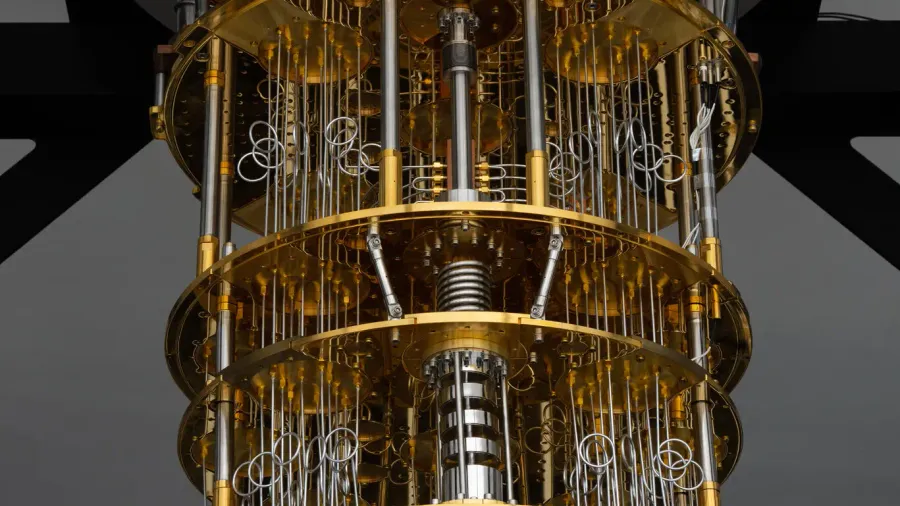· quantum computing · 3 min read
IBM details using its 127-qubit quantum processor to simulate the behavior of 127 atom-scale bar magnets, known as the Ising model, in less than a millisecond
But with their intrinsic ability to consider many possibilities at once, quantum computers do not have to be very large to tackle certain prickly problems of computation, and on Wednesday, IBM researchers announced that they had devised a method to manage the unreliability in a way that would lead to reliable, useful answers. “What IBM showed here is really an amazingly important step in that direction of making progress towards serious quantum algorithmic design,” said Dorit Aharonov, a professor of computer science at the Hebrew University of Jerusalem who was not involved with the research. While researchers at Google in 2019 claimed that they had achieved “quantum supremacy” — a task performed much more quickly on a quantum computer than a conventional one — IBM’s researchers say they have achieved something new and more useful, albeit more modestly named. “We’re entering this phase of quantum computing that I call utility,” said Jay Gambetta, a vice president of IBM Quantum. “The era of utility.”

In a recent paper published in Nature, IBM researchers and their collaborators from the University of California, Berkeley, reported a significant breakthrough in quantum computing. They demonstrated a novel technique called error mitigation, which allows them to correct for the effects of noise and errors in quantum calculations. Using this technique, they were able to perform a complex simulation of magnetism on a 127-qubit quantum processor, and obtain more accurate results than conventional supercomputers.
This is an important milestone in the quest for quantum advantage, which is the ability of quantum computers to outperform classical computers on tasks that matter for science and industry. The IBM team claims that they have entered a new phase of quantum computing, which they call utility, where quantum computers can provide useful and reliable answers to challenging problems.
- IBM researchers have devised a method to manage the unreliability of quantum computers, which can perform calculations on quantum bits (qubits) that capture a more complex state of information than bits in conventional computers.
- Using a quantum processor with 127 qubits, they simulated the behavior of 127 atom-scale bar magnets in a magnetic field, a simple system known as the Ising model, which is often used to study magnetism.
- By varying the amount of noise added to the calculations, they could subtract the effects of noise from the unreliable quantum results, a process they call error mitigation.
- By performing the calculation 600,000 times, they converged on an answer for the overall magnetization produced by the bar magnets, and compared it with the results from classical algorithms that use approximate solutions.
- For some complex but solvable instances, the quantum and classical algorithms produced different answers, and the quantum one was correct, suggesting that the quantum result is more accurate.
- The researchers believe that their method is an interim solution that can be used now for increasingly complex problems beyond the Ising model, and that error correction, a different approach that can detect and correct calculation mistakes, will be needed in the future to enable quantum computers to speed ahead for many uses.
Key takeaways
- Quantum computers can perform calculations that are too complex for conventional supercomputers, but they are also prone to noise and errors that affect their accuracy and reliability.
- IBM researchers developed a technique called error mitigation, which allows them to correct for the effects of noise and errors in quantum calculations by performing multiple runs with different noise levels and extrapolating the results.
- Using error mitigation, they were able to simulate the behavior of 127 atom-scale magnets in a magnetic field on a 127-qubit quantum processor, and obtain more accurate results than classical algorithms.
- This is a significant step towards achieving quantum advantage, where quantum computers can provide useful and reliable solutions to real-world problems.
Read more:
- IBM details using its 127-qubit quantum processor to simulate the behavior of 127 atom-scale bar magnets, known as the Ising model, in less than a millisecond
- Evidence for the utility of quantum computing before fault tolerance
- IBM's Latest Research Paper Signals A New Era Of Quantum Computing Is Here
- New paper from IBM and UC Berkeley shows path toward useful quantum computing
- New technique in error-prone quantum computing makes classical computers sweat
- Move Over AI: The Age of Quantum Computing Approaches as IBM Demonstrates Useful Application of Its Quantum Tech
- What IBM's result means for quantum computing
- Quantum Error Mitigation and the Path to Useful Quantum Computing
- IBM quantum computer beat a supercomputer in a head-to-head test
- IBM Reports Accurate Quantum at 100+ Qubits